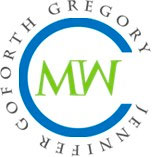Why I Don’t Heavily Personalize Cold LOIs

Quantity vs Personalized – What is the Balance?
Writers often complain about how time consuming it is to send out LOIs (Letters of Introduction) and I don’t disagree. But one of my secrets to sending out a lot of LOIs in a relatively short period of time is that I don’t heavily personalize each LOI. Yes, I know many writers swear by this approach. And that all the writing books on pitches tell writers to include these important customizations. But I think that personalizing too much defeats the purpose of LOIs.
What I do and do not personalize
Let me clarify – I am totally talking about totally COLD LOIs. These are when I simply found their company online and decided that they might be a good client. I have no idea if they have any writing needs or even if they use freelancers. Heck, most of the time I’m not even sure that I’m contacting the right person.
But what I do make sure is that I am only sending LOIs to companies that are likely to hire me, meaning that they are doing work in my niche and that my skills are likely a match for what they need. I absolutely believe its worth the time to research carefully the companies before sending out LOIs, otherwise you are very likely wasting your effort.
However, I don’t send the exact same LOI to everyone. I write the LOIs in batches and I do customize some parts, such as the brands I’ve worked for and other experience relevant to the type of client that I’m sending to. For example, if I’m sending LOIs to hospitality technology companies, then I will start with the base email included in this post.
From that point, I do personalize the following for each email:
- The name of the person I am sending the email to – Hi John or Hi Peggy. Always. I think that the first name is super-duper important and show’s that it’s not a mass email.
- The company – For the same reason up above. Since details are my nemesis, I use a base LOI with the company highlighted in yellow to make it less likely for me to forget to change. But yes, I have forgotten at times. And surprisingly, I have actually gotten work from an email with the name of another company in it, which goes to show you that mistakes aren’t the end of the world.
But what I don’t include in my cold LOIs is a few sentences at the top of each LOI:
- Complimenting the client on a recent project or article
- Information about the company specifically, such as mergers, awards
- Comments about the person’s past jobs (unless you have a strong connection, see exceptions later)
- Anything else other than my brands, relevant experience and any measurable results
Why I Don’t Personalize More for Cold LOIs
It’s simple. Cold LOIs are a numbers game. You have to send out a bunch of LOIs to get a response. And I consider a 10 to 20 percent response rate from the first email and first follow ups to be REALLY good. This means the majority of LOIs that you send will never get a response. When you are first starting out it often takes a lot of LOIs to get your name out there. So you have to get a lot of LOIs out there and that means getting as many out there as possible. That said, I think it is a million percent worth spending time searching for clients that are likely to hire you, meaning that they are in your niche and already producing content.
In my experience, the best way to get a lot of LOIs out in the universe is to send only the amount of time absolutely necessary on each one. Looking up past editions of the magazine or blog is really time consuming. Then crafting something witty to say also takes a long time – probably 3 times as long. So that means the difference between 50 and 150 LOIs, which is ginormous. So for me, the extra personalization is what I have decided to stop doing on my cold LOIs to save time and crank out more LOIs.
I also think that content marketing clients are looking for two things when they respond:
- Do you (the writer) have experience in their topic?
- Do you have experience as a freelance writer?
And my five(ish) sentence LOI answers both of them. The next question – would you be a fit for their team? – is answered after they respond to your email.
That brings me to my next point. When you get a response to your LOI, that is absolutely the time to personalize your LOI as much as you can. That is the time to show the potential client that you understand their business and their needs.
For example, you send out an LOI and you get a response – probably a version of “Looks great, we will keep you on file.” Check out this post to see why I am positive this isn’t a kiss-off rejection. If you get this response then it means two things: 1. They hire freelance writers. 2. They are interested in hiring you. So when you follow up to the response – and yes, you absolutely must follow up – then take the time to personalize it. Find out what’s going on in the company, compliment a recent project or find a common interest. You have already caught their interest and now is the time to spend the extra time on personalization.
When I Think It’s Worth Personalizing
Back to your LOIs. I think there are certain circumstances where it is absolutely worth the time to personalize your initial LOI as much as possible, meaning that you find common interests, compliment their work and mention a specific article.
- Job Postings or FB call for writers – This means that you know that they hire writers and you need to stand out from the often hundreds of responses. I think that job ads are only worth replying to when you are such a perfect match for the job that you feel strongly that your LOI will stand out among hundreds. So if you are going to take the time to reply then go ahead and spend the extra time to personalize.
- Referrals – A writer shared an editor contact with you, or a client gave you the inside scoop that another department is looking for a writer. You have a very high chance of landing the gig in this case, so it’s worth the time.
- Warm Leads. Perhaps you know through the grapevine that this company uses a lot of freelancer writers. Or maybe you and the editor worked for the same company in the past. These aren’t just a shot in the dark, but an email with a pretty good chance of getting a response.
- Someone you met in real life – You went to a conference and met a great connection, or perhaps you had a Client Connections meeting at the upcoming ASJA conference. These are super warm emails as well. But don’t make superficial comments about their magazine or past. Instead think about something you talked about in the conversation and expand with something interesting. Maybe share a link to a related topic based on your discussion after a session. Or share a helpful idea to a work challenge the person shared. Add something in the email that extends your conversation and shows that you are both thoughtful and smart.
Yes, I know that other writers are going to disagree with my position. And I’m OK with that. But for me, I think that sending more LOIs with less personalization gets me the best overall results – meaning more new clients.
In an ideal world, it would be awesome to personalize every LOI. But this isn’t the ideal world. We only have limited time to try to find clients who are likely to hire us. And for me, personalizing warm leads and people that responds to my initial LOI is where I think my time is best spent.
What are your thoughts about personalizing? What is your experience?


Jennifer, I totally agree and advise others to do the same. Thanks for putting it out there in spite of the naysayers.
Wow! This is….interesting. I just spent a bunch of time today on only a few LOIs and as a result I missed my target goal. I think I may just try your approach tomorrow. (See if I can make up the difference! ;o) Thanks as always for your insightful advice, Jennifer.
I’ve been reading several articles on your blog after being directed here by Jen Miller’s newsletter. My plan is to start sending out several batches of LOIs and I appreciate all the information. Thank you!